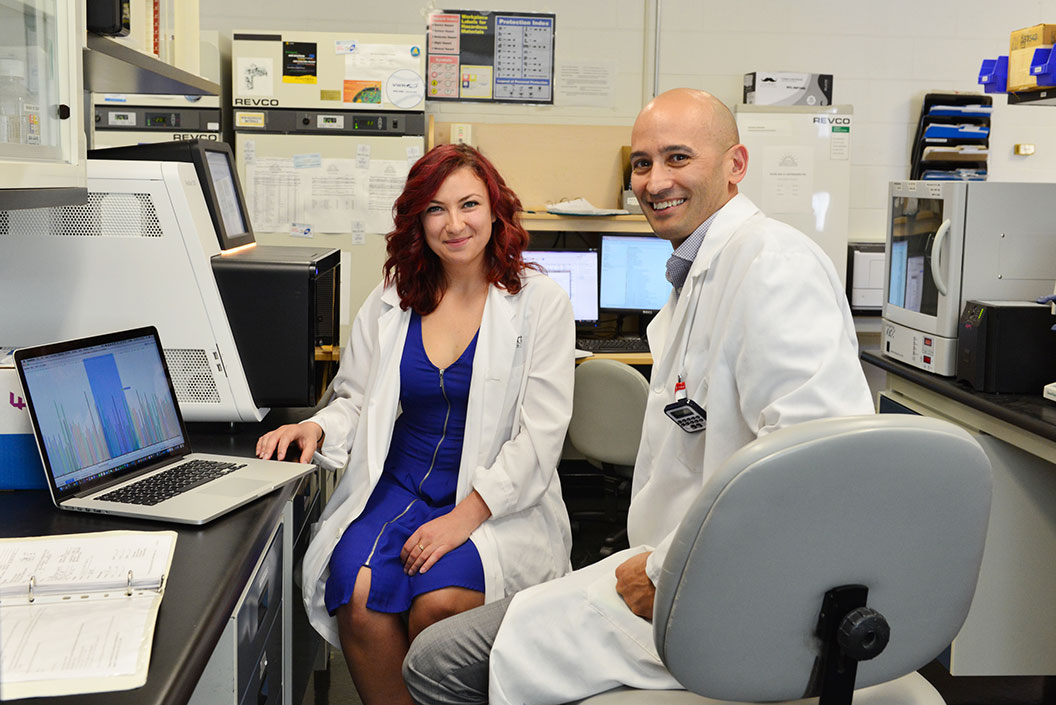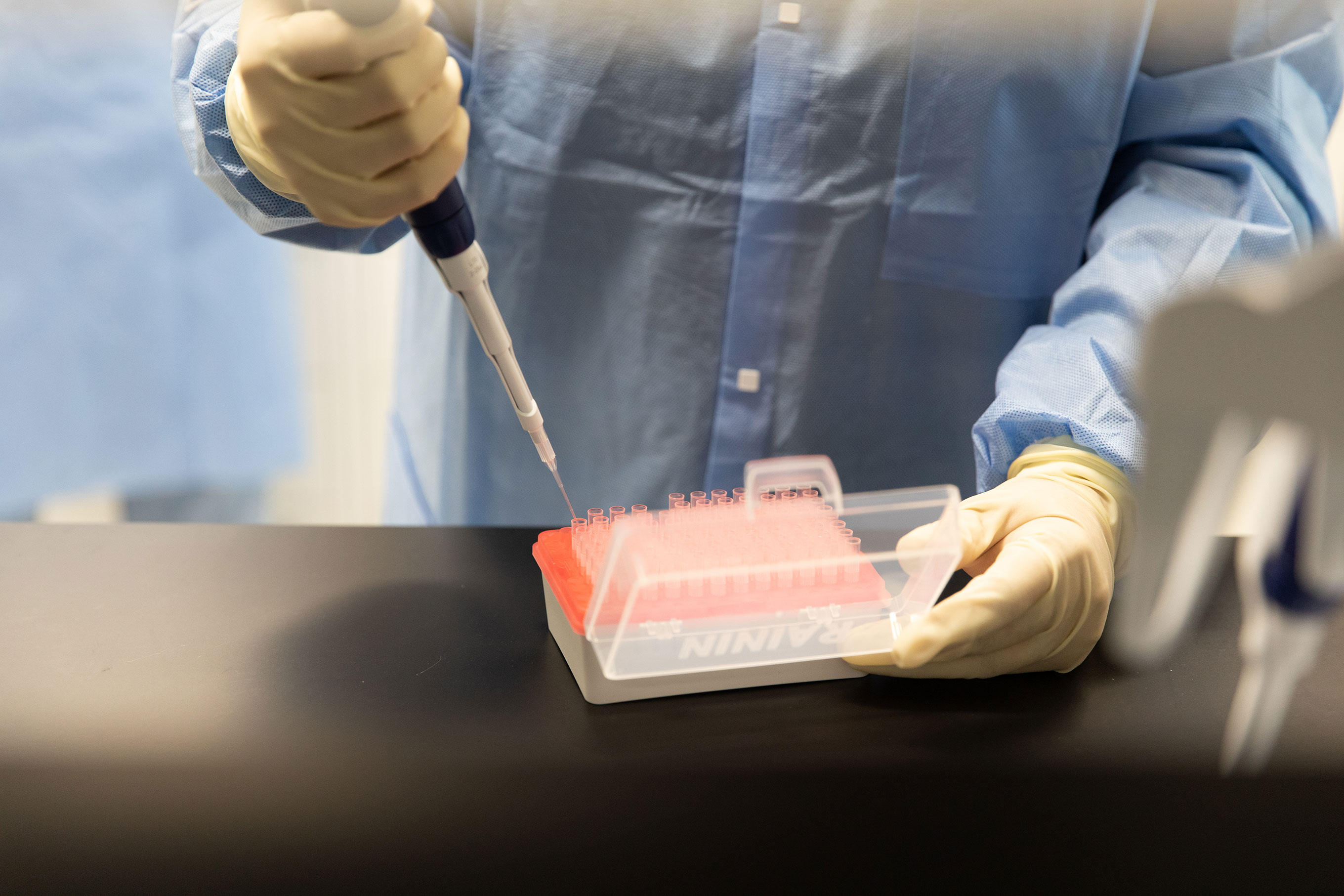
“I wanted to be able to work with these more dangerous pathogens that have a higher impact on human mortality.”
- Ermela Paparisto, PhD Trainee
By Max Martin, MMJC’19
In 2009, the H1N1 pandemic shook the world, with estimates showing between 11-20 per cent of the world’s population contracted the disease.
Five years later, the Ebola outbreak started in West Africa, killing more than 11,000 people in two years.
Then, in 2015, the Zika epidemic began spreading through North and South America.
These deadly viruses – appearing in an instant – caused mass devastation around the globe.
At Western’s Imaging Pathogens for Knowledge Translation (ImPaKT) Facility, located at Schulich Medicine & Dentistry, a team led by Stephen Barr, PhD, is on the forefront of protecting the population against the next onslaught of new and emerging viruses.
“By understanding how those viruses learn to adapt to humans, we can better understand how these viruses are evolving and how we as humans can fight back and attack these pathogens.”
– Stephen Barr, PhD
“With various viral outbreaks that emerge in the world, like Ebola, it’s always important to stay on top of them,” said Barr, Associate Professor, Microbiology and Immunology. “We need to understand these outbreaks and how these viruses are causing infection, and, more importantly, why we aren’t overcoming these infections.”
Inside the ImPaKT Facility, his lab is researching deadly pathogens with the goal of developing new therapeutics to overcome these infections. To do this, they’re studying a naturally produced protein called HERC5. The enzyme has been shown to have antiviral properties against viruses like HIV, and has recently been shown to inactivate Ebola.
Barr’s team is taking a look at genetic variations in HERC5. By analyzing the strengths and weaknesses of different forms of HERC5, he’ll be able to develop therapeutics that can boost the protein’s antiviral properties and the human immune response.
But it’s work that wouldn’t be possible without ImPaKT.
“ImPaKT contains state-of-the-art imaging that lets us take a close-up look at these viruses and how they’re interacting with our cells and how they behave in animal models.”
Some of the viruses he works with simply couldn’t be studied without the safety features of the new facility. “Viruses like West Nile virus are strictly high-containment pathogens because they are so deadly to the human population,” he explained.
Having advanced imaging equipment located in a Level 3 containment facility will allow Barr to study the pathogens in real-time. Tracking the viruses while they are live and replicating provides important clues as to how they develop throughout the viral lifecycle.

“I wanted to be able to work with these more dangerous pathogens that have a higher impact on human mortality.”
- Ermela Paparisto, PhD Trainee
As an educator, Barr says the ImPaKT Facility will be a game-changer for the learning experience of graduate trainees.
“This facility trains highly qualified personnel to study pathogens that not a lot of labs are looking at,” Barr said, adding his students will learn about the procedures and safety precautions for working with deadly pathogens.
“The ImPaKT Facility was one of the selling points of coming to Western. I wanted to be able to work with these more dangerous pathogens that have a higher impact on human mortality,” said Ermela Paparisto, a PhD trainee and researcher in Barr’s lab. “I was drawn to Dr. Barr’s lab because we’re working with viruses that are impacting people’s lives today.”
While Paparisto says gaining valuable experience working in a containment lab will help her long-term career goals, she’s also excited about the opportunity to learn different techniques and experiments in the collaborative facility.
“It’s really nice to be able to talk to people about your experiments, and seeing how different people do their experiments is a great learning opportunity,” she said.
As for having to suit up head-to-toe in containment gear to work with potentially deadly pathogens, Paparisto says her family and friends are still warming to the idea.
“They do think it’s crazy, but they do appreciate the fact that it’s real human diseases that you can see on the news, and I’m working with them.”

“Our goal is to develop therapeutics that can be rapidly mobilized as soon as outbreaks occur to help prevent global pandemics.”
– Stephen Barr, PhD
It’s those types of viruses – the ones that rapidly spread to headline-making outbreaks – that Barr is dedicated to fighting.
“With ImPaKT, we can branch out to other emerging pathogens that not a lot of people look at,” Barr said.
New viruses tend to emerge and then disappear, with the cycle repeating until the virus learns to adapt to human hosts, where it can stay in the population and spread.
“The worry with these emerging pathogens is that because they evolve at such a high rate, they may evolve a way around our vaccines, in which case the infection will stay in the human population,” Barr said.
That’s why continuing to develop novel treatments and additional vaccines will be crucial for preventing emerging pathogens from establishing a foothold in the human population.
Now, ImPaKT will be the main battleground in Barr’s quest to halt these deadly viruses.
“Our goal is to develop therapeutics that can be rapidly mobilized as soon as outbreaks occur to help prevent global pandemics,” he said.